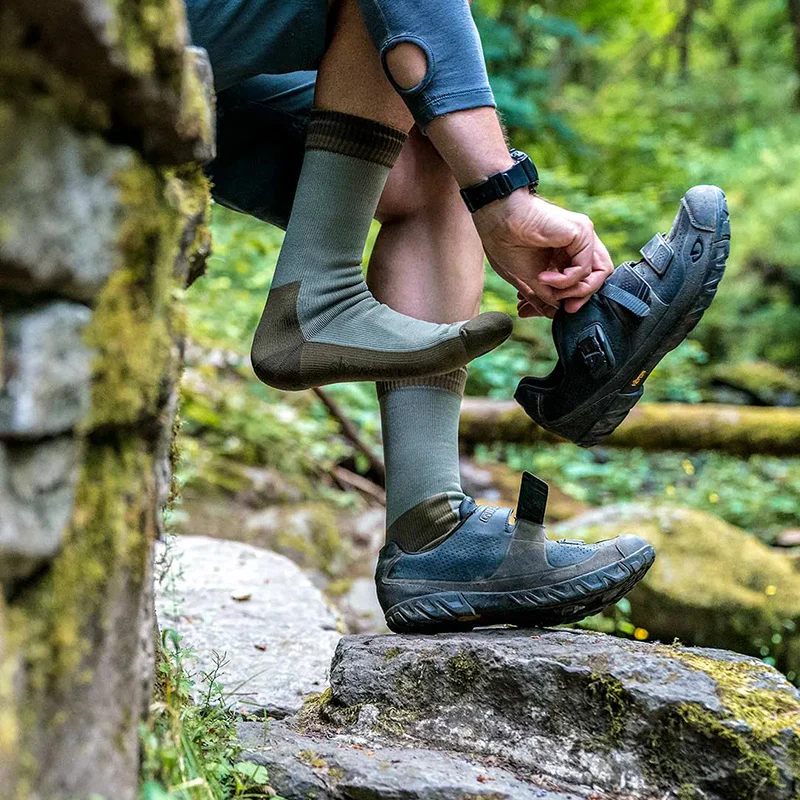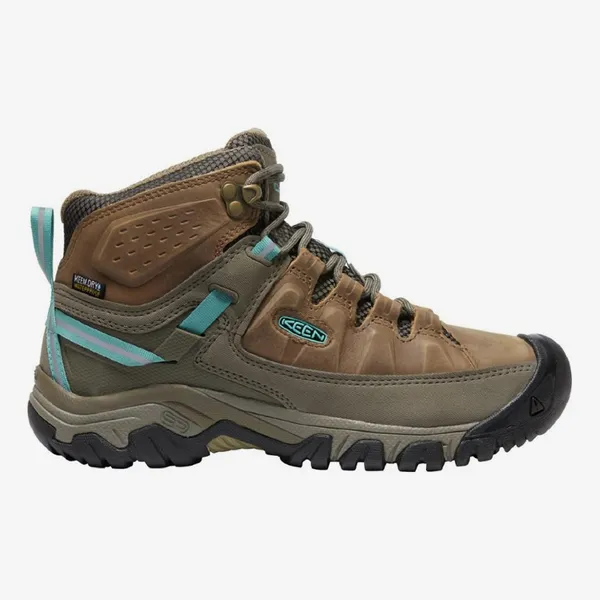I. Choosing the Right Winter Hiking Shoes

a. Understanding the Importance of Winter-Specific Footwear
When embarking on winter hiking adventures, it’s crucial to recognize the significance of winter-specific footwear. Unlike regular hiking shoes, winter hiking shoes need to provide enhanced insulation, traction, and weather resistance to ensure safety and comfort in colder conditions.
b. Identifying Key Features for Winter Hiking Shoes
They should incorporate specific features such as insulation, waterproofing, and enhanced traction. These features are essential for maintaining warmth, protection from moisture, and stability on slippery terrains, making them indispensable for winter hiking.
c. Consideration for Terrain and Weather Conditions
Different terrains and weather conditions demand specific attributes from winter hiking shoes. Considerations such as the presence of snow, ice, or wet conditions should guide the selection of appropriate footwear for the prevailing environment.
II. Insulation and Waterproofing
a. Types of Insulation for Winter Hiking Shoes
Insulation is a critical element of winter hiking shoes. This section will delve into various types of insulation commonly found in winter hiking shoes, including synthetic insulations, down fill, and other innovative technologies designed to retain heat and keep the feet warm in cold weather.
b. Waterproofing Technologies and Materials
The ability of winter hiking shoes to repel water is paramount. Exploring different waterproofing technologies and materials, such as Gore-Tex, eVent, and proprietary waterproof membranes, will offer insights into maintaining dry feet when hiking through snow and slush.
c. Balancing Insulation with Breathability
While insulation is vital for warmth, breathability is equally important to prevent perspiration and moisture buildup inside the shoes. Balancing insulation with breathability ensures that the feet stay dry and comfortable during extended winter hikes.
III. Traction and Stability

a. Importance of Outsole Design for Winter Hiking
The outsole design of winter hiking shoes plays a critical role in providing traction and stability on snow and ice-covered terrains. Exploring the significance of lug patterns, materials, and overall outsole construction will shed light on the crucial role of outsole design for winter hiking.
b. Studs, Cleats, and Traction Systems
Various winter hiking shoe models are equipped with studs, cleats, or integrated traction systems to enhance grip on slippery surfaces. This section delves into the different types of traction enhancements, their benefits, and how they contribute to improved stability and safety during winter hikes.
c. Ankle Support and Stability Features
Ankle support and stability features are essential for navigating uneven and slippery terrain. Winter hiking shoes with features such as ankle cuffs, sturdy materials, and reinforcement technologies provide the necessary support to prevent injuries and enhance overall stability during cold-weather hikes.
IV. Fit and Comfort
Sizing Considerations
When it comes to purchasing winter hiking shoes, getting the right size is crucial. Unlike regular shoes, winter hiking shoes need to accommodate thicker socks and possibly even a liner for added warmth, so it’s important to go up a half or full size from your regular shoe size to ensure a comfortable fit. Additionally, consider trying on winter hiking shoes in the afternoon when your feet tend to be slightly larger due to walking and activity throughout the day. This will help ensure that you don’t end up with shoes that are too tight when your feet swell during a long hike.
Importance of Proper Fit for Cold Weather
In cold weather, the fit of your winter hiking shoes becomes even more important. A snug but not constricting fit is essential for maintaining warmth and preventing cold-related injuries such as frostbite. Too tight shoes can restrict blood flow, leading to cold feet, while shoes that are too loose can cause blisters and discomfort. Look for winter hiking shoes with adjustable lacing systems that allow you to customize the fit to your foot, ensuring a secure and comfortable feel that still allows for good circulation.
When trying on winter hiking shoes, be sure to wear the same type of socks that you would typically use for winter hiking, to get the most accurate feel for the fit. Walk around the store and even try walking on an incline if possible, to ensure that the shoes provide the right amount of support and stability for winter terrain.
Cushioning and Support for Long Winter Hikes
They often involve longer trekking through challenging terrain, so having adequate cushioning and support in your winter hiking shoes is essential for comfort and protection. Look for shoes with ample cushioning in the midsole to absorb impact and provide a comfortable stride, especially on rocky or uneven surfaces. A supportive and stable outsole with good traction is also important for navigating icy and snowy trails.
In addition to cushioning and support, consider the ankle height of your winter hiking shoes. Opting for a high-cut or mid-cut boot can provide added ankle support and protection from snow and debris, which is especially valuable in wintry conditions where the risk of twisting an ankle is higher.
V. Maintenance and Care
Hiking shoes are an essential piece of gear for anyone who enjoys spending time outdoors. Whether you’re hitting the trails in the summer or braving the winter elements, it’s important to properly maintain and care for your hiking shoes to ensure they stay in good condition and last as long as possible. In this article, we’ll discuss three key aspects of maintenance and care for winter hiking shoes: cleaning, storing and drying techniques, and general maintenance to prolong the lifespan of your shoes.
Cleaning Winter Hiking Shoes
Properly cleaning your shoes is an important part of maintenance, as it helps to remove dirt, salt, and other debris that can cause damage over time. To clean your shoes, start by removing the laces and insoles. Use a soft brush or cloth to gently remove any dirt or debris from the exterior of the shoes. For stubborn stains or salt residue, you can create a mild cleaning solution using warm water and a small amount of gentle detergent. Use a sponge or soft brush to apply the solution to the affected areas, then rinse with clean water and allow the shoes to air dry.
When cleaning the interior of your hiking shoes, be sure to remove any excess dirt or debris before using a damp cloth and mild detergent to gently clean the insoles and lining. Allow the shoes to air dry completely before reinserting the insoles and laces.
Storing and Drying Techniques
Properly storing and drying your winter hiking shoes is essential for maintaining their shape and preventing damage. After a day of hiking in wet or snowy conditions, it’s important to properly dry your shoes to prevent mold and mildew from forming. Start by removing the insoles and allowing them to air dry separately. Stuff the shoes with crumpled paper or a shoe tree to help maintain their shape and absorb excess moisture. Avoid placing your shoes near direct heat sources, as this can cause the materials to dry out and crack.
When storing your shoes for an extended period of time, be sure to clean them thoroughly and allow them to dry completely before placing them in a cool, dry area away from direct sunlight. Avoid storing your shoes in airtight containers, as this can trap moisture and lead to mold growth. Instead, opt for a breathable storage bag or open shoe rack to allow for airflow.
Maintenance to Prolong the Lifespan
In addition to cleaning and properly storing your winter hiking shoes, there are a few maintenance tasks you can perform to prolong their lifespan. Regularly inspect your shoes for signs of wear and tear, such as worn treads or loose stitching, and address any issues promptly to prevent further damage. If your shoes have waterproofing treatment, be sure to reapply it as needed to maintain their water resistance.
You can also apply a waterproofing or conditioning treatment to the exterior materials of your shoes to help prolong their lifespan and maintain their performance in wet conditions. Be sure to choose a product that is specifically designed for the materials of your hiking shoes, and follow the manufacturer’s instructions for best results.

